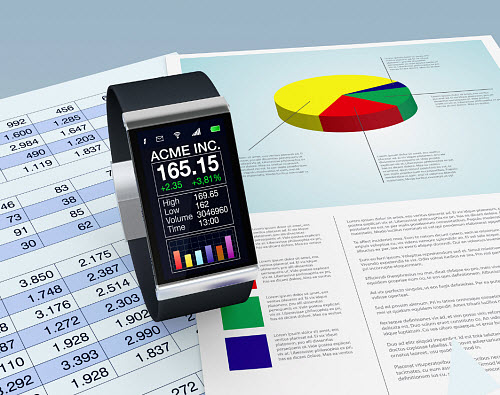The Power Suit from Heritage Bank lets consumers make a payment with their sleeve.
The Australian bank has partnered with VISA and premium Australian tailors, M.J. Bale, to develop this wearable tech that lets people make contactless payments via Near Field Communication (NFC) technology.
The NFC chip is woven directly into the suit.
This wearable technology garment uses the identical NFC chip that is found in VISA payWave terminals. However, instead of being integrated into a card, the chip is weaved right into the suit’s sleeve and is then connected to the account of the “Power Suit” wearer. Once activated, the wearer can then make contactless payments with their suit by simply tapping or waving their sleeve over the payWave terminal.
The Power Suit is made from the finest Australian merino wool and tailored in Japan by M.J. Bale. It utilizes Visa’s payWave system to link to the mobile wallet from Heritage Bank. Those who wear the suit can add funds to their mobile wallet with their bank’s credit or debit card and use it to buy merchandise.
This smartsuit eliminates the need to carry around a credit card. As long as the NFC chip makes contact with the terminal, the payment is processed. That said, currently, to make a payment with the suit, purchases must be under AUD $100.
M.J. Bale CEO Matt Jenson commented that “The prototype means the wearer doesn’t need to ruin the cut of their trousers or jacket with a bulky wallet. It allows individuals to be ahead of the technology game and look top notch.”
This wearable tech is also supporting a good cause.
According to the Heritage Bank’s official website, 11 prototype suits have been designed for select lucky customers across Australia, to test the new tech-savvy concept. In addition, the Heritage Bank put up a twelfth suit for a charity auction online. This suit recently sold for $510 via eBay and all of the proceeds from the auction were given to 4 ASD Kids, a charity that supports children with autism spectrum disorders (ASD).
Thus, the winner of the auction is not only the owner of rare and innovative wearable tech they also had a hand in helping out in raising awareness and money for kids with ASD.
Even though the wearable technology market is rapidly building in devices, applications are nearly nonexistent.
The wearables market is quickly flooding with smartwatches and other types of mobile gadgets that are worn on the wrist or other places on the body, but at the same time, there are very few applications that are available in the app stores for these devices.
Now that Android Wear has been released by Google, that is expected to change rather quickly.
Mobile app developers are already starting to enter into the race to become the leaders among the applications available for smartwatches. The popularity and growth of wearable technology is allowing them to be able to take hold of an opportunity that has been increasingly challenging – to the point of impossible, for many – when it comes to putting out a hit mobile app. As the number of applications for Android and iOS devices is now in the millions, it is difficult for a developer to stand out.
The number of apps for smartwatches is notably lower, making it far easier to be noticed by users.
What will be interesting is whether it will be games that will become the most popular among wearables – as is the case with smartphones and tablets – or whether it will be fitness and health tracker apps that will lead the way in these even smaller screen mobile gadgets.
BI Intelligence has recently released a report that provides some insight regarding the current ecosystem for wearable apps. It looked more closely at precisely why the present environment for wearable tech device applications is as limited as it is. Moreover, it also examined the way that certain categories for apps could help to make not only the developers, but also the device category, a tremendous mainstream success.
The report didn’t look exclusively at the market for smartwatches, but also looked at the broader spectrum of wearables and their apps. For example, the Google Glass apps space was examined, and the battle for dominance between Google and Apple were also discussed. Among the primary barriers that was identified was the fact that the wearables sphere is currently highly segmented. That may, however, not remain the case with Android Wear now in play, and with an iOS launch expected at some point this year.


